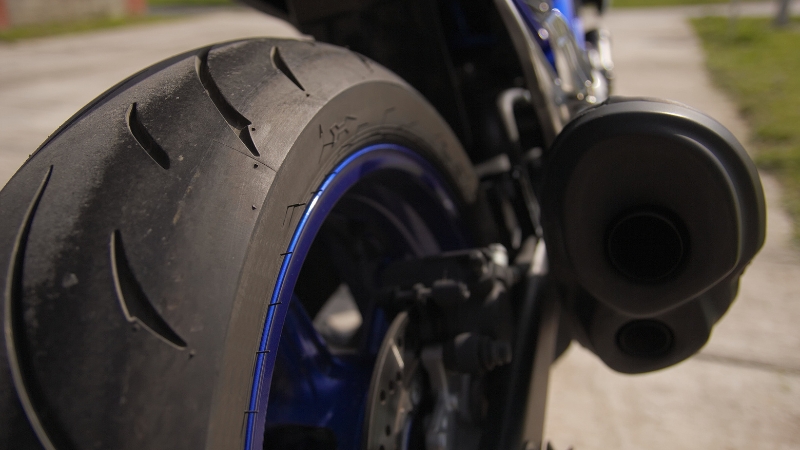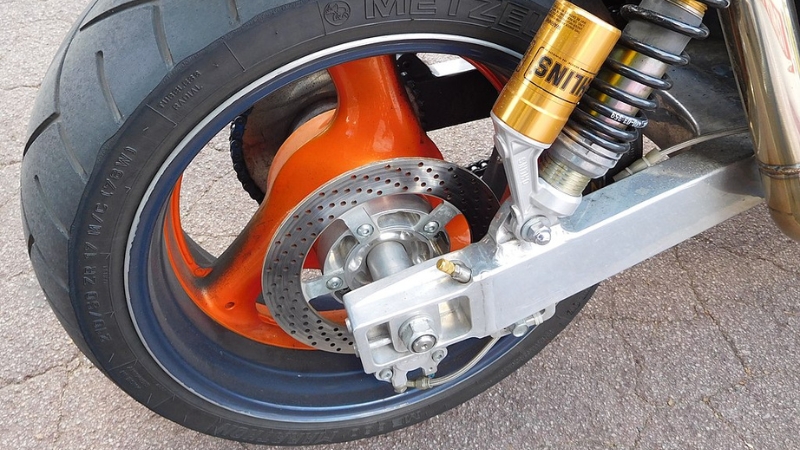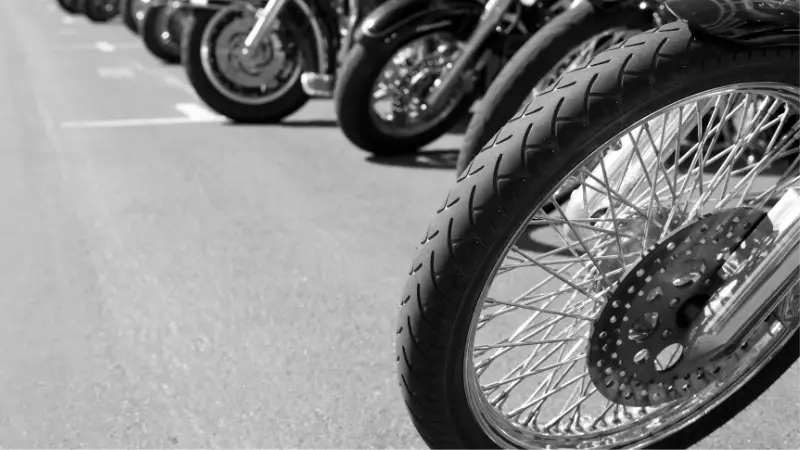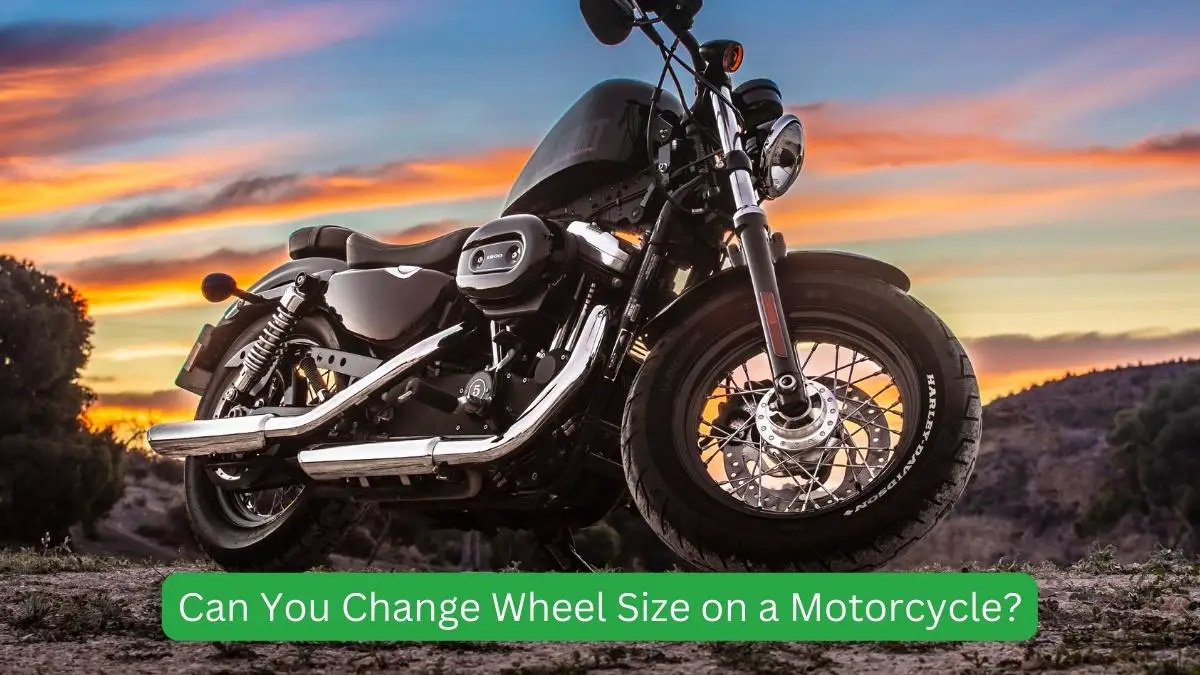As a biker, motorcycle tire maintenance is one of the things that you need to master.
It’s common to see bikes on the road with different sets of tire sizes, and your wonder if you can also change tire sizes on your ride.
You can change to a different wheel size on your motorcycle as long as the wheel you change fits the frame of your motorcycle. For the front wheel, the new size must fit within the damper fork, while for the rear wheel the new size must fit within the swingarm.
In this post we will break down everything you need to know before making the decision to purchase new wheel sizes for your motorcycle.
Let’s dive in!
Why Change Wheel Size on a Motorcycle?
The most common reasons why someone would want to change wheel size on their motorcycle are as follows:
- They want to enhance their bike’s performance, one of the means is changing tire sizes, typically using wider ones.
- Changing tire sizes can help improve the aesthetic look of the motorcycle.
4 Things to Consider Before Changing Wheel Size
We have summarized several key points that you need to look into when changing the size of the wheel.
Here are four things you should check before purchasing a different wheel size.
1. Changing to Wider Tires: Things to Consider

Are you thinking of getting wider tires? They are a great option for drag bikes since the large surface area has better road contact, hence gaining more traction. You will experience more speed and better grip.
Changing to wider tires improves your safety when riding in wet or rainy conditions as it prevents slippage.
If you are riding a high horsepower engine, you definitely need wide tires as they help in stability. Also, the tires offer a smooth ride as they can absorb bumps or uneven surfaces.
Before settling on changing wheel size to wide tires, check your bike frame. If you have a small frame, it will lead to scrapping of the tire sides, causing damage.
Another challenge for installing wide tires is that you need to retrain yourself to get used to riding your bike. The tires are flatter shaped, making it more challenging to turn compared to rounded tires.
2. How Will the Swingarm and Fork Affect the Size of Wheel to Purchase?

As stated above, before changing the size of your rear wheel/tire, check the clearance of the wheel area. Ensure that both the width of the tire and the diameter of the wheel can fit in between the swingarm.
If it won’t fit, consider another tire and wheel size option or change the swingarm to one with a wider gap, if available for your bike.
The same is true for your front wheel, but in this case you must make sure that the size of the new wheel/tire fit in between the damper fork of your bike.
If the tire is hitting either the swingarm or the fork, do not install it. You risk damaging your tire and frame by doing so. In addition, it becomes a safety risk as it can lead to an accident.
Check the owner’s manual for the dimensions of your ride or consult your local shop before making a purchase.
If you decide to reduce the size of the wheel, consider the type of load you scale. Some motorcycle owners change both rear and front tires to a small size for cosmetic reasons.
However, if you purchase tires that are too small, it becomes more difficult to maneuver. You will likely also have problems with unsprung weight.
Safety is an important consideration when changing tire size. This is because each type of wheel has specific limitations for load rating and maximum speed.
When buying new tires, keep in mind the dynamics of the frame and swingarms. For instance, some bikers even modify the frame to fit a specific wheel size.
3. Changing Your Rear Wheel? Things to Consider
If you have been keen on the road, you will see that for most bikes, the rear and front wheel size differs. In most cases, such as on scooters, the front while has a larger diameter compared to the rear one, but in terms of width, the rear tire is wider.
The rear wheel bears the most load; hence it’s typically bigger. Also, it is bigger since it helps in the acceleration process. Both rear and front wheels have different physical forces when in motion hence the difference in sizes.
When changing the wheel size, consider the above facts. If you want your motorcycle to have more speed, have a rear wheel that is wider.
The rear rim size also determines the tire size you can purchase. Each type of rim has a designed tire MM size. If you have the wrong size, you risk damaging the rim and need more force when turning.
A narrow tire on a rim designed for a wider tire will flatten the surface of the wheel leading to slow cornering. The truck will feel more like a truck when turning than a bike.
4. Changing Your Front Wheel? Things to Consider

When deciding to change the front wheel, you have to examine the overall performance and use of the bike. The front wheel is typically used for navigation functions.
This means that if you replace it with a larger sized wheel, the motorcycle will become easier to navigate especially when riding on an even road, while the opposite will be true with a smaller sized wheel.
Although the front wheel usually has a larger diameter compared to the rear one, it has a smaller width. A rider controls his/her bike using the handlebar, which directs the front wheel. You must be able to control the front wheel with ease. The front tire is thinner to make it easy to guide the motorcycle.
When changing the tire size, factor in how easy you want it to be to move around. If you are moving to a thicker front tire, take your time to adapt to the new features. If you are transitioning to a narrow front tire, expect more handling flexibility.
Summary
In conclusion, it is easy to change the wheel size of your motorcycle, but equally necessary to check the above factors before deciding.
Ask yourself what you want to improve on your bike before choosing the best fit for you.
Hi, my name is Niklas, the head content creator & CEO of Whirling Wheelz. I am very interested in vehicles of all kinds, mainly cars. I have a car mechanics degree from high school and a big hobby of mine is to follow the WRC (World Rally Championship) both online and through travel.


